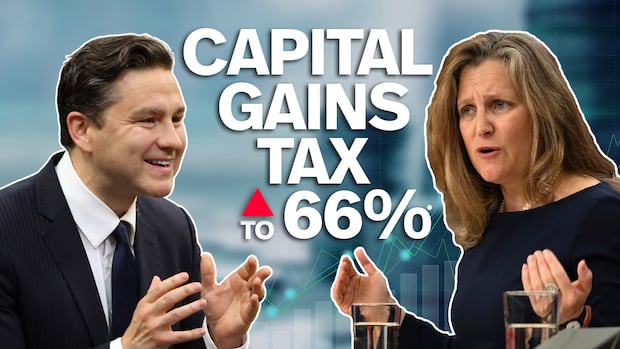The prorogation of Parliament has led to confusion around the federal government’s plans to boost the rate of tax some Canadians pay on the capital gains — or profits — they make from selling assets like stocks, a family business or a cottage.
Last spring, the federal Liberal government proposed changes to how it taxes those capital gains.
The plan was introduced in Parliament in September. It was still being debated when Parliament was prorogued at the request of Prime Minister Justin Trudeau on Monday.
That move kills all bills and motions that had yet to receive royal assent, meaning the proposed capital gains changes haven’t been approved.
Even so, following government practice around tax change proposals, the Canada Revenue Agency has already begun collecting capital gains taxes at the new and higher rate.
“We could be in this weird limbo period for a year or two, driving uncertainty, which is super unfair to my members,” said Dan Kelly, president and CEO of the Canadian Federation of Independent Business.
The plan introduced in the spring was to increase the “inclusion rate” for the capital gains tax.
Under the old plan, Canadians pay taxes on 50 per cent of the profit (the capital gain) on the sale of assets. Under the new plan, they would pay taxes on 67 per cent of the profit instead. That new rate would apply to all capital gains of more than $250,000 each year.
Businesses would face the same inclusion rate, but the new tax would apply to all capital gains (not just gains above $250,000).
When the measure was introduced, the finance minister at the time, Chrystia Freeland, said it was intended to address what she called issues of tax fairness. She said the government needed the revenue from the changes to fund programs like pharmacare, dental care, child care and the green energy transition.
Even though the changes were never approved in Parliament, the Department of Finance says it is already collecting capital gains taxes at the new, higher rate and will continue to do so.

“Parliamentary convention dictates that taxation proposals are effective as soon as the government tables a notice of ways and means motion; this approach provides consistency and fairness in the treatment of all taxpayers,” the department said in a statement to CBC News.
Business groups say that makes no sense.
Kelly and CFIB are calling on the Canada Revenue Agency to revert to the original 50 per cent inclusion rate.
“I’m not sure who to lobby,” Kelly told CBC News.
He has members scrambling to figure out what will happen next.
There has been fierce debate about the impact of the tax hike.
The Liberals say only the richest Canadians will see any changes, while critics say it will stifle growth and harm more Canadians than the government is letting on.
Canada’s capital gains tax increase comes into effect on June 25. Andrew Chang breaks down some misleading claims about the changes coming from both sides of the political aisle and explains who is likely to pay the new tax, how much and how often. Does it really just hit the ultra-rich?
Freeland has said that in any given year, “only 0.13 per cent of Canadians — with an average annual income of $1.4 million — will pay more on their capital gains.”
Others have said the move will hit many small businesses and punish the middle class.
Economist Jack Mintz has calculated as many as 1.26 million Canadians would pay the higher rate at some point.
But the Department of Finance says the only real way to get back to that original inclusion rate is to wait for the next session of Parliament.
“Upon resumption of Parliament, if no bill is passed in the House of Commons, and the government signals its intent to not proceed with the proposed measures, the CRA would cease to administer them,” the department said.
Kelly said that timeline is concerning. He said it’s unclear how any of the potential Liberal leadership candidates will approach the capital gains tax. And while the Conservatives have been opposed to the increase, he said, it won’t necessarily be at the top of the agenda if that party forms the next government.
In the meantime, any company that makes a profit on its investments, any entrepreneur who sells their business or any individual selling the family cottage will have to budget for the higher rate.
If the changes are formally scrapped, they can apply for a refund.


